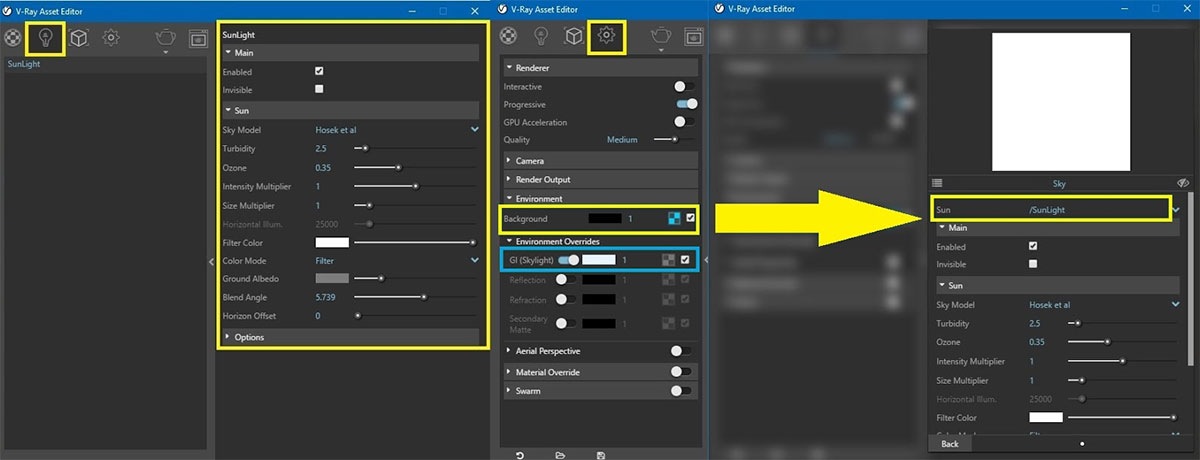
Go to Settings in your Asset Editor, and enable EVERYTHING under your Environment dropdown. Now let’s see about adding that Background!

While test rendering your settings, you need to set an appropriate Camera Exposure value it’ll depend on your machine + the windows’ sizes + the lighting in your scene. You can test render to preview your settings. For now, these settings are more than enough. We’ll leave the rest of the settings for a later, more advanced tutorial. Small Sun = Sharp Shadows, and vice versa.
Size Multiplier: Since your sun is invisible, we will use this as a way to either sharpen the shadows cast by the sunlight or blur them. You can balance that with your Camera Exposure settings. Intensity Multiplier: Controls how strong your sulight is. And the Higher the value, the more Greyish Blue. The Lower the value, the more Yellow your sunlight will be. Ozone: This setting, just like Turbidity, depends on your chosen HDRI. Basically the higher the number in Turbidity the ‘dustier’ the sunlight will be (Dusy Orange), and the Lower the number the more ‘pure’ the light will be (Perfect Yellowish Light). 
(so the sunlight matches the atmosphere).
 Turbidity: This setting will depend on what type of HDRI you’re using, whether it’s Beach, Desert, Jungle, City, etc. To start viewing messages, select the forum that you want to visit from the selection below. You may have to register before you can post: click the register link above to proceed. First, you need to Enable Sunlight, and make sure it’s Invisible. V-Ray for SketchUp V-Ray for SketchUp :: General If this is your first visit, be sure to check out the FAQ by clicking the link above. All these settings may look a bit too overwhelming, but I’ll explain this step by step.
Turbidity: This setting will depend on what type of HDRI you’re using, whether it’s Beach, Desert, Jungle, City, etc. To start viewing messages, select the forum that you want to visit from the selection below. You may have to register before you can post: click the register link above to proceed. First, you need to Enable Sunlight, and make sure it’s Invisible. V-Ray for SketchUp V-Ray for SketchUp :: General If this is your first visit, be sure to check out the FAQ by clicking the link above. All these settings may look a bit too overwhelming, but I’ll explain this step by step.







 0 kommentar(er)
0 kommentar(er)
